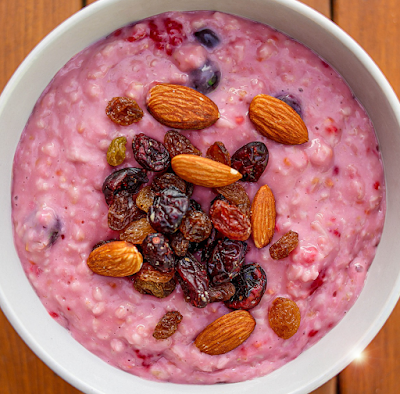What is Thermic Effect of Food?
The thermic effect of food (TEF) is the amount of energy required by the body to digest, absorb, and process the nutrients in food. It is also known as the "diet-induced thermogenesis" and typically accounts for about 10% of total energy expenditure. This energy expenditure is required to break down the food and turn it into a form that can be used by the body. The thermic effect of food is higher for protein compared to carbohydrates or fats.
The Impact of the Thermic Effect of Food on Winter Weight Management
During the winter, the body may use more energy to maintain its internal temperature due to the colder external environment. This can lead to an increase in overall energy expenditure, which can make it more difficult for some people to maintain or lose weight.
This is because, in addition to the energy required for daily activities and physical activity, the body must also use energy to stay warm. As a result, people may need to increase their caloric intake during the winter to compensate for the additional energy expenditure.
On the other hand, the thermic effect of food can help the body to burn more calories and maintain a healthy weight, which can be beneficial during the winter.
What are the Top 6 Energy Foods?
There are a variety of foods that can provide the energy needed to power through the winter months. You can include these foods in your diet to stay satiated and refreshed throughout the day.
Here are six food options that can help keep you feeling full and energized:
1) Nuts and seeds: Nuts and seeds, such as whole natural almonds, flax seeds, peanuts, and pumpkin seeds, are a great source of healthy fats, minerals, and fiber. They can help keep energy levels steady throughout the day and can also be a satisfying snack option.
Legumes: Legumes, such as lentils, black beans, and chickpeas, are a great source of protein, fiber, and complex carbohydrates. They are also high in a variety of vitamins and minerals, making them a great option for maintaining energy levels. Try a lentil soup with added vegetables or a smoothie with spinach, berries, Greek yogurt, and chia seeds.
RELATED POST: How to Cook Beans or Legumes
2) Sprouts: Sprouts are an excellent source of energy as they contain complex carbohydrates and protein. Germinated sprouts are even more nutrient-dense and can help keep you feeling full for longer periods of time. Additionally, sprouts are loaded with vitamins and minerals that can enhance overall health.
3) Yogurt: Yogurt is a great source of healthy fats, calcium, and probiotics, which can help improve digestion and gut health. However, it's important to check the nutrition label before purchasing yogurt, as some can be high in sugar.
RELATED POST: Yogurt Spheres Recipe by Reverse Spherification- Molecular Gastronomy Recipe
4) Bananas: Bananas are a great source of instant energy thanks to their natural sugars, as well as magnesium, fiber, and potassium.
5) Whole grains: Whole grains, such as oats, quinoa, and brown rice, are a great source of complex carbohydrates. These carbohydrates are broken down slowly by the body, providing a steady stream of energy throughout the day. Moreover, whole grains are high in fiber, which can help keep you feeling full for longer periods of time. Try Oats cooked with almond milk and topped with berries, nuts and seeds.
RELATED POST: How to Cook Grains Like Rice and Barley
Quinoa: Quinoa is an incredibly nutrient-dense food that is packed with vitamins, minerals, dietary fiber, carbohydrates, and protein. Its carbohydrates are low on the glycemic index, meaning they are digested slowly, providing a steady boost of energy, and helping to curb unnecessary snacking.
6) Lean proteins: Lean proteins, such as chicken, fish, and tofu, are important for maintaining energy levels because they help repair and build muscle tissue.
They take longer to digest than carbohydrates, keeping you feeling full for longer periods of time. Try chicken breast with quinoa and roasted vegetables.
It's important to note that everyone's dietary needs are different. Incorporating these high energy foods into your diet can help you feel refreshed and energized throughout the day, while also supporting weight management and overall health.
Consuming a balanced diet with a variety of nutrient-dense foods will help support overall health and energy levels.
REFERENCES:
Chapter 3: Calculation of The Energy Content Of Foods – Energy Conversion Factors. (n.d.). Retrieved 1 25, 2023, from Food and Agriculture Organization of the United Nations: http://www.fao.org/docrep/006/Y5022E/y5022e04.htm
Kinabo, J., & Durnin, J. V. (1990). Thermic effect of food in man: Effect of meal composition, and energy content. British Journal of Nutrition, 64(1), 37-44. Retrieved 1 25, 2023, from https://cambridge.org/core/journals/british-journal-of-nutrition/article/thermic-effect-of-food-in-man-effect-of-meal-composition-and-energy-content/f9cc2d6789b57215d7178f346b572242
Poehlman, E. T., & Horton, E. S. (2009). The Impact of Food Intake and Exercise on Energy Expenditure. Nutrition Reviews, 47(5), 129-137. Retrieved 1 25, 2023, from https://academic.oup.com/nutritionreviews/article-abstract/47/5/129/1856605
Reed, G. W., & Hill, J. O. (1996). Measuring the thermic effect of food. The American Journal of Clinical Nutrition, 63(2), 164-169. Retrieved 1 25, 2023, from https://ncbi.nlm.nih.gov/pubmed/8561055
Tai, M. M., Castillo, P., & Pi-Sunyer, F. X. (1991). Meal size and frequency: effect on the thermic effect of food. The American Journal of Clinical Nutrition, 54(5), 783-787. Retrieved 1 25, 20`23, from https://ncbi.nlm.nih.gov/pubmed/1951147









No comments:
Post a Comment